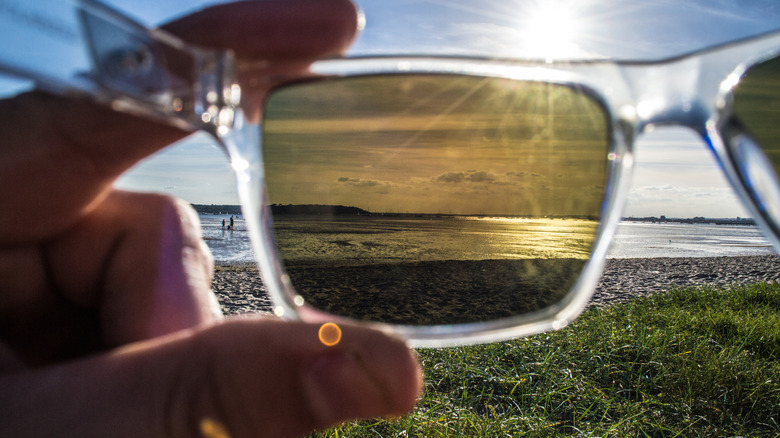The Science Behind Polarized Sunglasses, And Why They Actually Work
It's a beautiful summer day, and you're outside enjoying the weather. You are wearing your favorite sunglasses for protection from the bright sun. However, you still find yourself squinting when the sun reflects off the water in a dazzling, blinding display. This phenomenon, known as sun glare, doesn't just occur over water. Sunlight creates glare off snow, ice, metal surfaces on cars, and other similar materials, impeding your vision — even when you're wearing sunglasses. That's where polarized sunglasses come into play.
Polarized lenses are popularly known as anti-glare sunglasses. They are specifically designed to reduce glare, protecting your vision so you can enjoy more outdoor time. The image of the world through these sunglasses has better contrast. So, along with reducing glare, wearing polarized sunglasses also results in better visibility outdoors. Note that this is not the same as a UV protection that you find commonly in sunglasses or as lens filters for cameras.
How polarized sunglasses work
To create polarized sunglasses, manufacturers use a polarizing film made from stretched polyvinyl alcohol (PVA) or iodine crystals. Stretching aligns the long-chain molecules in one direction, turning the film into a light filter. Due to this, only light that strikes the glasses vertically, i.e., vertically polarized light, is allowed to pass through. The horizontally polarized light is absorbed by the molecules, so it does not pass through. This is the opposite of the random arrangement of molecules found in standard glass, which lets light pass through. This is important because direct sunlight is usually in the form of vertical beams. However, sunlight reflecting off smooth surfaces, like water in a lake or the metal accents on a car, results in horizontally polarized beams.
The polarizing film is then sandwiched between layers of lens material, usually polycarbonate or CR-39 plastic, and fused under heat and pressure to lock alignment. Let's take the polarized sunglasses manufacturing company, SunRx, as an example. To create its lenses, it applies hydrocarbons onto a film of polyvinyl acetate– a synthetic resin. The film is heated and stretched to polarize the molecules. It is then coated with a conducting molecule like iodine to complete the process. This enables the molecules to align in a specific orientation.
What are the drawbacks of polarized sunglasses?
While great for use outdoors, anti-glare sunglasses aren't the best for looking at screens because of the backlit nature of displays. However, the visibility can depend on what is on the screen, how bright it is, the angle you are looking at it from, and more. They are also not recommended to be worn at night because of their high-contrast nature, which reduces the light entering your eyes and makes the environment appear darker. Some drivers complain that, at night, glare from other cars' headlights or stoplights is distracting. While it may be tempting to wear anti-glare glasses to reduce glare in such circumstances, it is not worth the risk.
Polarized lenses are available at most retailers that sell sunglasses, and are available in both prescription and nonprescription forms. If you're in the mood for something high-tech, you can also take a look at something like the Ray-Ban Meta glasses or the Oakley Meta AI glasses. If you only step out occasionally, you likely don't need polarized lenses. But if you enjoy being outdoors for long durations, polarized sunglasses may be the right choice for you.


